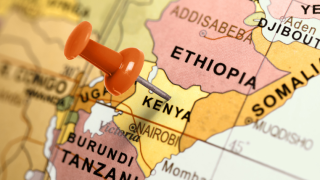That’s according to Norman Albi, CEO of AFR-IX Telecom during a recent interview with Capacity TV.
As the continent goes through a transitional period, the shift in the market has sparked a number of new investments and projects, also driven by the growing demands of the volume consumer market.
The finance sector has been quick to pick up on this market shift and it has responded in kind with Telecom Egypt being the most recent recipient of this new surge in investment. In May, the company was awarded a $200 million loan from the African Export-Import Bank (Afreximbank). The deal was negotiated by the Egypt branch of the Abu Dhabi Islamic Bank and the newly acquired funds will be used for working capital as well as future investments.
MTN Group is also reportedly now preparing for its speculated $500 million Nigerian IPO. The company says it is hoping to raise at least $400 million in funds to help reduce its telco debt, though no applications for the offer have been received by the Securities and Exchange Commission or the Nigerian Stock Exchange.
Capacity requires cables
The African subsea market is experiencing particularly high growth in the region with numerous new projects scheduled for completion over the next 12-18 months.
One being Ghana’s Eastern Corridor subsea cable that has begun its final phase of development. Once finalised, the new cable will be followed by a 165km cable extension linking Accra to Ho. The €38 million project is funded by a loan from the government of Denmark, the Danish International Development Agency.
Similarly back in April, Globacom announced that it was building a new fibre-optic subsea cable in Nigeria. The multi-billion naira cable called Glo2 is to be built by Huawei.
“The new submarine cable will be approximately 850 km long and will be named Glo2. The cable will be integrated to Globacom’s existing terrestrial backbone network to provide additional service redundancy,” said Sanjib Roy, Globacom’s regional director of technical.
It was also this month that Angola Cables’ 6,500km South Atlantic Cable System (SACS) from Sangano in Angola to Fortaleza in Brazil, became ready for service.
In Northern Africa, Algeria’s government confirmed that the country would have two new subsea cables by the end of 2018. One connecting Algeria to Spain, and the second interconnecting an exsiting cable providing onward connectivity to the US and Asia.
In the cloud space, global cloud infrastructure revenues for the Middle East and Africa region increased by 27.5% between 2016 and 2017.
Project-wise, Tata Communications and Dreamtime Technologies partnered together to build a cloud-based virtual mobile network to serve African mobile and internet of things (IoT) providers. They hope that the new offering will lay the foundation for next-gen mobile and IoT services across various sectors such as: healthcare, transport, mining, agriculture, banking and retail.
Data market grows
In line with the growing need for capacity and data, data centres expanded at the same time. Africa Data Centres has expanded facilities at its flagship East Africa Data Centre (EADC) in Nairobi, Kenya.
PAIX Data Centres and NSIA Technologies revealed that they would jointly develop carrier neutral data centres in Abidjan, Côte d’Ivoire and Dakar, Senegal.
Because of the rural landscape across much of the continent, satellite communications revealed itself as another high growth area. Vodacom Business Nigeria partnered Intelsat to expand its enterprise broadband connectivity in West Africa. Under the agreement Vodacom will be able to offer new and enhanced services to its customers.
Intelsat joined Smart Africa, a public-private organisation that supports Africa’s digital transformation. The satellite company says it wants to with governments and other organisations to reduce the digital divide.
MainOne has ramped up its expansion plans, having secured a C1B licence allowing it to expand national and international connectivity services in Côte D’Ivoire (The Ivory Coast).
Regionally, the Zimbabwean telecoms industry has been doing particularly well. Back in March telecoms revenue for the country reached approximately $1 billion in 2017 according to figures from Zimbabwe’s regulator.
Interestingly, the majority of this revenue was made up of mobile operators, which increased 17.6% year on year to reach $849.8 million in 2017. Mobile subscriptions grew 42.5%, reaching 4.7 million by the end of 2017, indication growing mobile penetration in the region.
Asian telecoms companies have begun increasing its presence in the market largely through partnerships and cooperations.
In May, Korea’s KT expanded its ICT cooperation with African countries based on its successful nationwide LTE network project in Rwanda.
Similarly, Liquid Telecom and China Telecom Global partnered to offer its enterprise and wholesale customers of extended network coverage.
But I leave AFR-IX Telecom’s Albi with the last word as he surmises it perfectly: “The expansion of services in Africa is driving capacity needs and Africa is leading the pack in terms of growth.”
Be sure to join us at Capacity Africa 2018, 5 & 6 September in Kigali.





